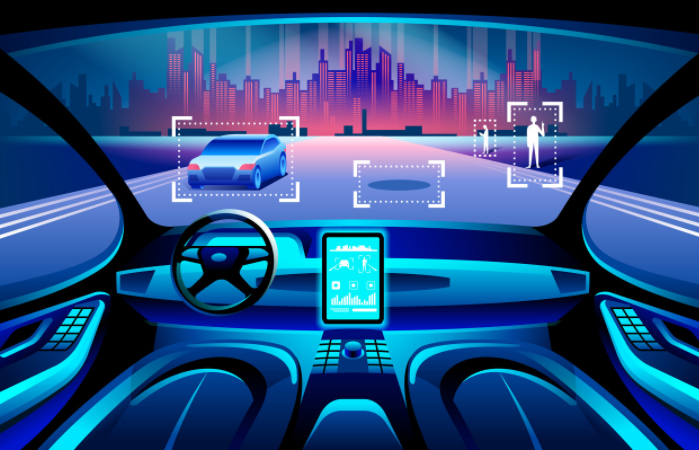The new trend of haptic technology enabling car driving

In the field of modern automobile industry, safety and comfort have always been the key points of great concern to automobile manufacturers. As technology continues to advance, haptic technology is introduced, which can bring about a dramatic change in the car driving experience. Haptic feedback can not only improve the safety of driving, but also play a good role in promoting the comfort experience of customers. Here's a closer look at how haptic technology is impacting driving and the user experience, as well as its potential for future development.
The foundation of haptic technology
Haptic technology, also known as haptic feedback technology, mainly relies on special sensors and actuators to convey information to the user in the form of touch. It can simulate the physical touch in different environments, which can enhance the experience of interaction between users and devices. In cars, haptic technology is mainly used in steering wheels, seats and in-vehicle infotainment systems.
Improves safety with haptic feedback
During the driving process, haptic technology can send safety warnings in time through vibration and force feedback. For example, when the car approaches an obstacle in front of it, the steering wheel will vibrate slightly to alert the driver to pay attention. In addition, when driving at high speed, if the speed exceeds the set limit, the haptic feedback system can also use that vibration to alert the driver to avoid a possible accident.
Moreover, now that autonomous driving technology is becoming more and more popular, haptic feedback can play an important role in human-computer interaction. Self-driving cars often have to let the driver take over the operation in certain situations, and haptic feedback can tell the driver when to take back control through clear touch, which can improve the safety of driving.
Bring comfort
In addition to safety, haptic technology also improves the comfort of driving. When driving for a long time, the comfort of the driver and passengers can not be ignored. By incorporating haptic feedback systems into seats, steering wheels and control panels, car manufacturers can provide users with a more personalized experience. For example, the structure of the seat can be adjusted according to the passenger's body pressure and posture, and different tactile changes can make passengers feel more comfortable on long trips.
In addition, for drivers, haptic feedback can also be used for navigation and prompting functions. When the driver wants to navigate to a certain place, the on-board system can combine head motion sensors to guide the driver through the vibration of the steering wheel to better master the direction of travel. This combination of comfort and intelligence makes it easier for drivers to drive normally.
Various applications of haptic technology
Haptic feedback has a variety of applications in cars, not only in the traditional steering wheel and seats, but also in more interactive interfaces. For example, in-car infotainment systems are slowly moving towards haptic interfaces. By introducing haptic feedback, users can get more intuitive feedback when operating the touch screen, which reduces the possibility of misoperation. If the tactile experience can be further improved, perhaps in the future, users can feel the "real" touch when operating, like the feeling of simulating the button, and the immersion will be stronger.
Haptic feedback design for details like lighting and volume adjustment is also being adopted by car manufacturers. Imagine that when the driver wants to adjust the volume or change the music, haptic feedback can let the user know the status and change of the current data through different tactile changes. This personalized feedback allows users to be more confident when operating, and the overall pleasure of driving will be improved.
Future development direction
As haptic technology continues to advance, future cars will pay more attention to integrated user experience. The on-board system will not only have haptic feedback, but also dynamically adjust the intensity and pace of haptic feedback with the support of artificial intelligence and data analysis to adapt to different road conditions and the personal preferences of the driver. Moreover, as wearable devices become more and more popular, haptic feedback may also extend to interaction with wearable devices, allowing users to feel the interaction between body state and vehicle information in real time while driving.
In the long term, haptic technology will be combined with virtual reality and augmented reality to create a more interactive driving environment. The future car may integrate a comprehensive sensory experience, through the multiple interweaving of vision, hearing and touch, so that drivers and passengers feel a different driving experience.
In today's rapid development of science and technology, haptic technology has great potential to provide a new solution for the automotive industry to integrate safety and comfort. From improving driving safety to optimizing ride comfort, haptic feedback technology is increasingly becoming one of the key elements of automotive design. Future cars will certainly continue to innovate and break through in this regard, bringing consumers a richer driving experience.
The Products You May Be Interested In
 |
TPCM-2.4-5 | CMC 2.41MH 5A 2LN TH | 6894 More on Order |
 |
62054-P2S02 | XFRMR TOROIDAL 15VA CHAS MOUNT | 3526 More on Order |
 |
62045-P2S02 | XFRMR TOROIDAL 10VA CHAS MOUNT | 2430 More on Order |
 |
62044-P2S02 | XFRMR TOROIDAL 10VA CHAS MOUNT | 6048 More on Order |
 |
62035-P2S02 | XFRMR TOROIDAL 7VA CHAS MOUNT | 6642 More on Order |
 |
62025-P2S02 | XFRMR TOROIDAL 5VA CHAS MOUNT | 3924 More on Order |
 |
62021-P2S02 | XFRMR TOROIDAL 5VA CHAS MOUNT | 5058 More on Order |
 |
62012-P2S02 | XFRMR TOROIDAL 3.2VA CHAS MOUNT | 3204 More on Order |
 |
62005-P2S02 | XFRMR TOROIDAL 1.6VA CHAS MOUNT | 7668 More on Order |
 |
70074K | XFRMR TOROIDAL 35VA THRU HOLE | 6840 More on Order |
 |
70072K | XFRMR TOROIDAL 35VA THRU HOLE | 5634 More on Order |
 |
70041K | XFRMR TOROIDAL 10VA THRU HOLE | 2826 More on Order |
 |
70031K | XFRMR TOROIDAL 7VA THRU HOLE | 8658 More on Order |
 |
70013K | XFRMR TOROIDAL 3.2VA THRU HOLE | 4392 More on Order |
 |
70011K | XFRMR TOROIDAL 3.2VA THRU HOLE | 7560 More on Order |
 |
70025K | XFRMR TOROIDAL 5VA THRU HOLE | 4068 More on Order |
 |
62084-P2S02 | XFRMR TOROIDAL 50VA CHAS MOUNT | 7284 More on Order |
 |
62060-P2S02 | XFRMR TOROIDAL 25VA CHAS MOUNT | 23778 More on Order |
 |
70064K | XFRMR TOROIDAL 25VA THRU HOLE | 13758 More on Order |
 |
70034K | XFRMR TOROIDAL 7VA THRU HOLE | 8088 More on Order |
 |
70005K | XFRMR TOROIDAL 1.6VA THRU HOLE | 7218 More on Order |
 |
AC1050 | CURR SENSE XFMR 50A T/H | 7362 More on Order |
 |
AC1010 | CURR SENSE XFMR 10A T/H | 5963 More on Order |
 |
AC1025 | TRANSFORMER CURRENT 25.0 AMP | 4230 More on Order |









